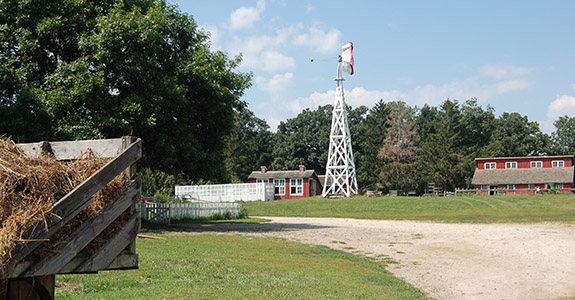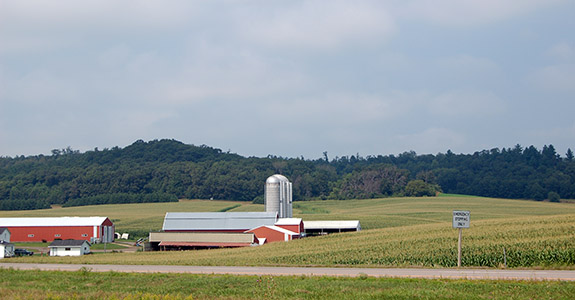What is Happening to the Family Farm? |
Driving around the country can really give you a perspective on things that we take for granted in our daily lives-like where our food comes from. One thing we noticed as we drove through the heartland of America is that our physical and ideological landscape is rapidly changing. Family farms across America are disappearing and with them a way of life that takes pride in hard work, producing a quality product, and strong family values. What does the future hold for America without the family farm?

These are some of the profound things we’ve noticed from our time on the road.
Small towns in rural America are getting smaller
Driving down Main street through numerous rural small towns, I wondered what the future holds for these communities as I saw very few young people. I wasn’t at all surprised given the limited options a small town has to offer, just saddened at the reality that a way of life may be ending. Lifestyles are changing, and young people especially are looking for job opportunities and social life beyond what these small towns can offer-many are going to college and seeking their fortunes in the big cities when they graduate. Without the next generation to run the family farm, many are being sold to large commercial farming operations.

Factory Farms are getting bigger
As we drove along some of the smaller two lane highways we were often times surrounded by fields of soybeans, and corn as far as the eye could see. Sadly these are the crops that are the driving force behind America’s problem with obesity. With the increase of factory farms, crops are being grown bigger and faster, and more resistant to disease thanks to genetic modification. Everywhere we looked we would see markers with code numbers to indicate the strains of crops that were being grown. There were occasional large harvesting equipment, silos, and irrigating machinery, but no red barns no farmhouses, no people.
What does all of this mean for America?
The family farm seems to be getting squeezed between a rock and a hard place, but is this the price of progress? At the Living History Farms in Urbandale Iowa, we traced the history of the family farm from and Ioway Indian Farm in 1700, to a horse powered farm in 1900. Much had changed over 200 years, primarily more efficient machinery to grow and process higher quality crops. But what had not changed were family values and the idea of the family farm. With the explosive growth of the factory farm those values have been replaced with the drive for profit. Profit does not take pride in hard work, or quality or values, profit only cares about how it can be increased.
If this is our path toward the future, I shudder to think what will become of our food supply in the year 2100. After seeing what I’ve seen, I make a point of supporting family farms by buying produce that’s organically grown by family farmers who take pride in the crops they sell. It’s time to take the long view as Americans and realize that when profit controls the food supply no one wins and a way of life that benefits all of us will be gone forever.








